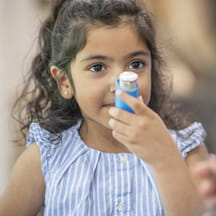More than 618,000 victims of child abuse were reported across the U.S. in 2020—that is 8.4 victims per 1,000 children in the population. At the Bernard & Millie Duker Children’s Hospital at Albany Med in Albany, NY, Rebecca Butterfield, M.D., section chief of Child Abuse Pediatrics, works to provide resources to support patients and families. Butterfield shares some of her insights.
A hidden epidemic
“Even with education and awareness efforts in most communities, it is a constant challenge to identify and prevent cases of child abuse and reach everyone who needs support. Many victims are not identified, and this problem has been exacerbated by the pandemic. For example, the number of documented cases of child abuse and neglect decreased in 2020, but contributing factors skewed the numbers, such as children not being in school.”
Screening methods
“Across our hospital, staff members use universal screening tools for child maltreatment and provide 24/7 support. In the Massry Family Children’s Emergency Center, nurses provide forensic examinations when appropriate and coordinate care for the families who need it, which requires a multidisciplinary approach. This can include Child Protective Services, parenting resources, mental health resources through the county, and more.”
Assessing risk factors
“Screening for intimate partner violence in all health care settings can help reduce cases of child maltreatment. Research shows child maltreatment in as high as 30% to 60% of families where spousal abuse occurs. When a patient tells their primary care physician about violence committed against them by their partner, it presents an opportunity for the physician to talk about prevention and safety, which can be a key asset.”
Community partners
“Outside the hospital setting, partners in the community play a key role in identifying cases of abuse or maltreatment. Teachers and school officials are most often the ones who identify potential cases and refer them for further examination. Early recognition plays an important role in getting assistance to a child in need.”


